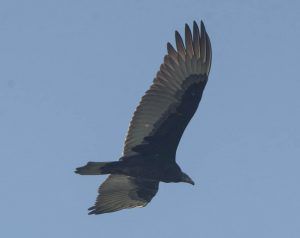The Joint Base McGuire-Dix-Lakehurst (JB MDL) has been recognized for significant conservation work alongside the U.S. Fish and Wildlife Service (Service) and other partners in the North Atlantic-Appalachian Region.
The award was presented Jan. 21 by Eric Schrading, field supervisor for the New Jersey Field Office.
Located 18 miles southeast of Trenton, the base spans 42,000 contiguous acres and more than 20 miles east to west, providing a wide range of military operations and hosting diverse wildlife species and habitats, according to information provided by U.S. Fish and Wildlife.
Through collaboration with the U.S. Fish and Wildlife Service, the State of New Jersey, the U.S. Forest Service, and other conservation organizations, JB MDL has been instrumental in restoring habitat to benefit several grassland nesting species, including upland sandpiper, bobolink, and grasshopper sparrow while also informing knowledge of the status of imperiled species such as the threatened northern long-eared bat, according to the statement.
“The leadership at JB MDL have had a long commitment toward restoration, management, and enhancement of fish and wildlife habitat on the base while maintaining military readiness and training objectives. This work has occurred both on and off the base including restoration of former cranberry bogs adjacent to Lakehurst Airfield back to native and imperiled white-cedar forested wetlands,” Schrading said in the statement.
In addition, the prescribed burning program at JB MDL has resulted in an increase in the presence of fire-dependent species on the installation.
This work is also revitalizing rare habitats such as Pine Barrens reed-grass savannah and the species that depend upon it.
“The habitats restored by JB MDL and our partners is extremely compatible with military trainings on base, while also creating valuable habitats for rare species, like the state-endangered upland sandpiper and eastern arogos skipper,” Mark Stevenson, Environmental Asset section chief for JB MDL, said in the statement. “CLEO Terrance Butler, the Service, and our partners have been instrumental in supporting the conservation efforts on base.”
In addition to habitat restoration efforts, the installation’s Community Based Deer Management Plan and commitment to hunter access has created new hunting opportunities while reducing the risk of white-tailed deer entering the airfields. The JB MDL’s work to monitor and control invasive species continues to limit the spread of non-native plant species and protect native ecosystems, according to the statement.
Biological research, species management, and habitat restoration activities on JB MDL are providing conservation well beyond the installation fence line. The JB MDL demonstrates an exceptional commitment to cooperative partnerships, protection of rare species, and provides high value outdoor recreation programs to the public and our veterans, all while achieving military readiness, according to the statement.

